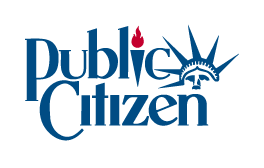
Public Citizen Launches Atomic Atlas Project
Web Site Allows Citizens to Access Radioactive Waste Transportation Route Maps
WASHINGTON D.C.—Public Citizen today launched the Atomic Atlas Project, a Web-based initiative highlighting the dangers of transporting nuclear waste. This innovative Web site will enable citizens across the country to view the proposed routes by which nuclear waste is to be transported and see how close this hazardous material will come to their hometowns if the routes are approved. The Web site is located at
http://www.citizen.org/cmep/atomicatlas/atlas.htm.More than 50 million Americans live within half a mile of likely nuclear waste shipping routes. By searching a map database on the Web site, citizens can see how many schools, hospitals and colleges are in close proximity to the proposed routes. The goal is to show communities the extent to which they and their children may be exposed to radioactive waste in the event of a nuclear transportation accident. "This site is a vivid demonstration that the nuclear industry's scheme to transport its radioactive waste to Nevada doesn't just affect Nevadans," said Wenonah Hauter, director of Public Citizen's Critical Mass Energy Project.
On hand to unveil the Web site and discuss the dangers of nuclear waste transportation were Sens. Richard Bryan (D-Nev.) and Harry Reid (D-Nev.), Reps. Shelley Berkley (D-Nev.) and Dennis Kucinich (D-Ohio), and Hauter. Bryan condemned the nuclear industry's "conspiracy of silence" to hide the effects of nuclear transport on communities. He praised the Web site as a tool citizens can use to see whether radioactive waste might come through their hometowns. "For far too long, the issue has been framed as Nevada versus the nuclear industry," Bryan said.
Reid encouraged citizens to visit the Web site, saying that the mapping project will help "let the American people know that atomic energy is not safe." Up to 100,000 shipments of nuclear waste will travel through 43 states and within half a mile of 50 million Americans over 25 years. U.S. Department of Energy data indicate that as many as 200 to 350 accidents could occur while radioactive waste is being shipped to a temporary storage facility.
"In all of the years we've been using nuclear power, we have not yet found a way of diffusing this nuclear waste to render it harmless." Berkley said. "Even had I been elected in a district with a nuclear reactor, I would have to think of the millions and millions of people put in harm's way because the nuclear industry has not found a viable way to dispose of its wastes."
The Senate is expected to take up the Nuclear Waste Policy Amendments Act of 1999 (S. 1287) in early October. House action is likely to follow soon after. If the legislation passes, several thousand shipments of nuclear waste could be shipped across the country to a temporary storage facility beginning in 2007. However, Bryan said he believes there will be enough votes against the bill to sustain a Presidential veto.
"You cannot dispose of nuclear waste. It's forever," Kucinich said. "You can store it, but you can't dispose of it." He added that "the nuclear industry promised us power too cheap to meter, but in fact it's become power too expensive to use." Ohio has a major transport route running through it, and many communities will be put in danger if this legislation passes. "Just as the nuclear industry has attempted to spread the cost of producing nuclear power . . . now they're trying to spread the cost of disposing nuclear waste—socially and economically," Kucinich said. He pointed out that the waste will travel within half a mile of the Great Lakes and thus will endanger one of our nation's most precious natural resources.
For more information about this and other Public Citizen issues, please visit our Web site at
www.citizen.org.Contact: Amy Shollenberger (202) 454-5118
Angela Bradbery (202) 588-7741